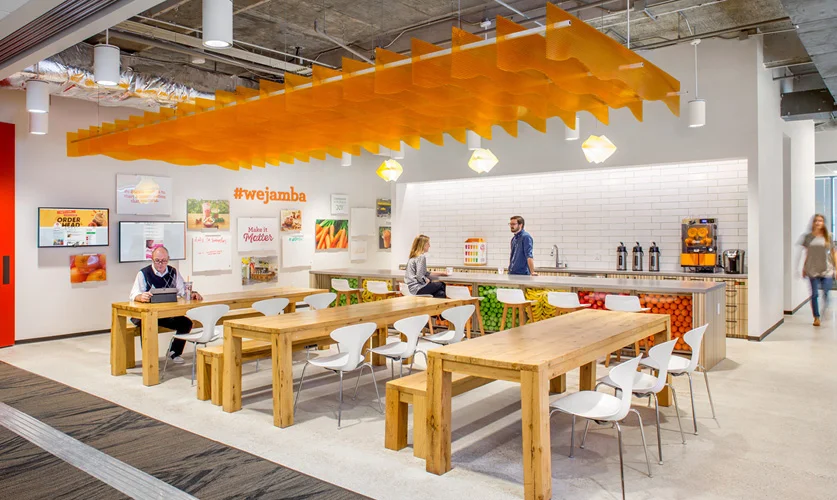Confidential Client. Photo © Sherman Takata
MARY LEE DUFF, LEED AP, ASSOCIATE IIDA
In 2008, Richard Thaler (economist and professor of Behavioral Science and Economics at the University of Chicago) and Cass Sunstein (legal scholar and founder of Harvard Law School’s Program on Behavioral Economics and Public Policy) coined the phrase choice architecture, along with the concept of libertarian paternalism. Explicated in Nudge: Improving Decisions about Health, Wealth, and Happiness, a book they co-authored, the idea was brilliant—support peoples’ right to choose, but care enough to stack the deck towards successful choice. Today, choice architecture is a key factor in strategizing the client experience and enhancing workspace utilization.
Twitter, San Francisco. Photo © Chad Ziemendorf
Choice architecture involves three key elements that affect curated choices.
- Default – happens when a user does nothing. For example, you leave your computer on; the system logs you out and the screen saver comes up. Since default options have a high likelihood of being selected, they need to be carefully considered and thought through before implementation.
- Feedback – a cue that points to a positive choice. Thaler used the example of light bulbs, popular at the time in Southern California, that glowed darker shades of red as consumers used higher levels of energy. The visual feedback was a reminder that influenced choice and helped reduce energy consumption by 40 percent during peak periods.
- Expecting error – scenarios that anticipate a likely problem. A wonderful example is the Paris subway card which can be inserted in any of four ways to gain entrance. Similar machines only function when the card is inserted one way. The expectation is error so why not make all the options work equally well?
MARY LEE DUFF, LEED AP, ASSOCIATE IIDA
Principal and Director of Workplace Strategy Mary Lee Duff develops high performance work environments and workplace strategies that integrate real estate, technology, process, and people to support and enhance organizational goals and objectives. With over 25 years of experience, she believes deeply in the value of end-user engagement from high-level visioning sessions to focus groups and ideation exercises that bring new concepts and planning to the forefront. Representative clients include SAP, Mercedes Benz, Salesforce, Google, and LinkedIn.



